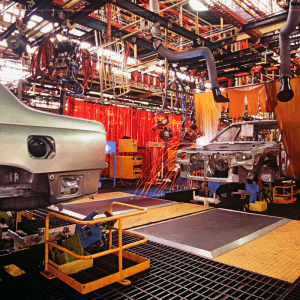Driverless cars and autonomous vehicles are tech’s next frontier, but could it spell trouble for job markets? Senior automotive business growth specialist Gerry Park outlines what’s ahead for the industry.
Recent news that automotive giant General Motors is doubling headcount at its autonomous vehicle unit Cruise was cause to celebrate for some. Ramping up staff in this way – mainly engineers – gives a good indication that driverless cars are close to becoming mainstream, and that GM is ready to accelerate development and testing of its latest technological innovations. In fact, it has issued a statement indicating that it plans to launch its robotaxi firm by the end of 2019. Google subsidiary Waymo, Uber, BMW, Volvo, Mercedes Benz, Nvidia and a host of other manufacturers are locked in a race to see who can become the first firm with a licence – and public support – to bring driverless cars to our streets.
Rise of the machines: the pros
Safety is touted as one of the main benefits of autonomous vehicles, with Uber’s Advanced Technologies Group stating that their mission is “to bring safe, reliable self-driving transportation to everyone, everywhere”. Most road accidents are caused by driver error, so it stands to reason that a machine may be the answer to limiting fatalities.
Reduced costs are the next most obvious benefit. Robots don’t require pensions or health insurance, and so many organisations are excited at the prospect of how autonomous vehicles could transform industries which have previously relied on manual automotive skills – logistics, transport, taxi firms, and even fast food delivery services are all watching closely to see where savings could be made and offerings enhanced. The ability to operate 24/7 without the need for mandated rest stops could revolutionise the transport service industry, and will mean plenty of job openings for engineers, planners and coordinators.
As well as the promise of new opportunities for businesses, infrastructure, architecture, and city planning industries will also experience a boom in the coming years thanks to this automotive innovation. If the adoption of ride-sharing autonomous vehicles really does become commonplace, great swathes of land will become available as the need for car parks, garages, and even traffic infrastructure such as roundabouts becomes unnecessary. The demand for talent in these areas is almost guaranteed to reach peak levels in the next decade or so. Despite the undeniable opportunities autonomous vehicles could bring, the rise of robot cars isn’t without its drawbacks.
 Terminator or life-saver?: the cons
Terminator or life-saver?: the cons
No discussion on autonomous vehicles is complete without mentioning the (in)famous ‘Trolley Argument’. This moral quandary provides insight into how driverless vehicles make decisions in an ever-charging and unpredictable environment such as a city street. What would the car do when faced with a choice between hitting a pedestrian and fatally injuring its passenger? Is there a right decision? Would it make a difference if the passenger was pregnant, and the pedestrian was elderly? The lack of human split-second judgement means the car must be programmed to respond in a specific way, and many objections have been raised over how a machine could be trusted with these choices. Perhaps unexpectedly for the automotive sector, this has given rise to the need for a slew of lawyers, researchers, focus group studies and even philosophers.
What’s more, the added convenience, low cost and accessibility of autonomous cars is predicted to lead to an obesity epidemic resulting from further inactivity. Worldwide, 1.3 million people currently die from traffic accidents per year, but 5 million die from obesity. Firms would be wise to put wellness and fitness initiatives in place long before this level of inactivity becomes the norm, highlighting the need for nutritionists, trainers and physicians in the coming years.
 As well as making the population overweight, driverless technology also may make many of us redundant. Beginning as early as 2020, the U.K. alone could see up to 1.2 million redundancies due to this innovation. Low-level, unskilled jobs will be worst affected, including delivery drivers, bus drivers taxi drivers and waste disposal workers. It’s unlikely that the job creation resulting from autonomous vehicle rollouts, such as engineers, maintenance and systems operators, will be enough to plug the gap.
As well as making the population overweight, driverless technology also may make many of us redundant. Beginning as early as 2020, the U.K. alone could see up to 1.2 million redundancies due to this innovation. Low-level, unskilled jobs will be worst affected, including delivery drivers, bus drivers taxi drivers and waste disposal workers. It’s unlikely that the job creation resulting from autonomous vehicle rollouts, such as engineers, maintenance and systems operators, will be enough to plug the gap.
For automotive manufacturers themselves, it’s a mixed bag. The days of having dealerships in every town and city may be drawing to a close, and for customer-facing sales executives, mechanics and administrators, this may spell the end. Retraining to fill roles in some autonomous-focused positions may be possible, but it’s likely that in order to keep up with the tech rivals, traditional manufacturers will take a hit before experiencing a dovetail in profits once again.





